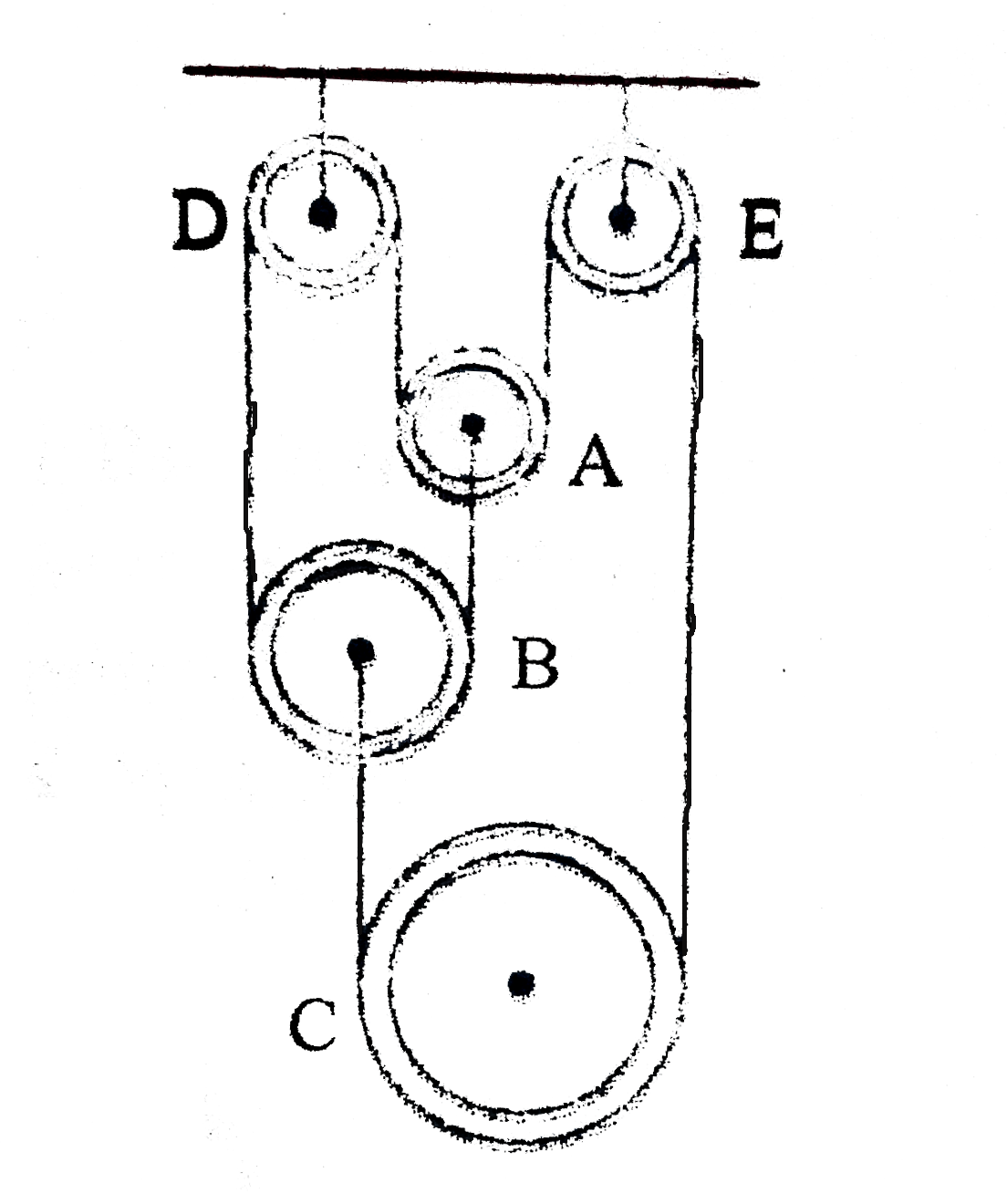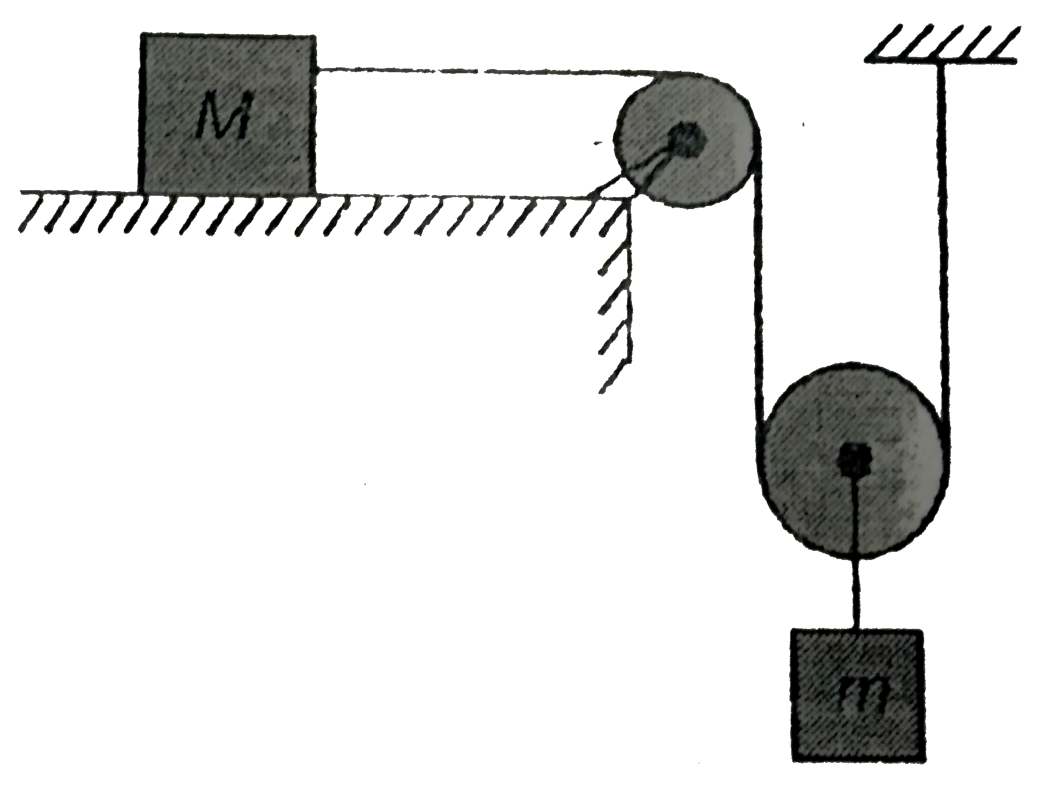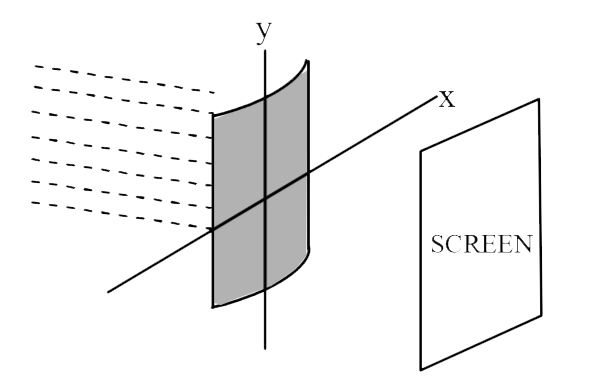In he shown figure, the pulley of mass M and radius R can rotate about its fixed horizontal axis (axle) without friction. Friction between light inextensible string and pulley is sufficient to prevent slipping of string over pulley. The masses of blocks are m1 and m2 such that m2>m1. The system is initially released from rest as shown,. Before the block of mass touches the pulley, pick up the correct statements.
The magnitude of acceleration of any small d of string is constant troughout the motion
Magnitude of force exerted by string on mass is larger as compared to that exerted by string on mass.
Accelerations of both blocks are same.
The Acceleration of small length dof string in contact with block of mass remains constant
The correct Answer is:B, D
Topper's Solved these Questions
- ROTATIONAL DYNAMICS BOOK - AAKASH SERIESCHAPTER - ROTATIONAL DYNAMICS EXERCISE - PRACTICE SHEET (ADVANCED) Linked comprehension Type Questions
14 Videos
- ROTATIONAL DYNAMICS BOOK - AAKASH SERIESCHAPTER - ROTATIONAL DYNAMICS EXERCISE - PRACTICE SHEET (ADVANCED) Matrix Matching Type Questions
2 Videos
- ROTATIONAL DYNAMICS BOOK - AAKASH SERIESCHAPTER - ROTATIONAL DYNAMICS EXERCISE - PRACTICE SHEET (ADVANCED) Straight Objective Type Questions
37 Videos
- RIVISION EXERCISEBOOK - AAKASH SERIESCHAPTER - RIVISION EXERCISEEXERCISE - MOTION IN A PLANE (LAMNI.S THEOREM)
6 Videos
- ROTATIONAL MECHANICSBOOK - AAKASH SERIESCHAPTER - ROTATIONAL MECHANICSEXERCISE - Questions for Descriptive Answers
20 Videos
Similar Questions
In the figure, the blocks have masses M1andM2(M1>M2) and acceleration a. The pulley P has a radius r and some mass the string not slip on the pulley

View SolutionIn the arrangement shown below, pulleys are mass-less and friction-less and threads are in-extensible. Block of mass m1 will remain at rest if :

View Solution
Knowledge Check
Two masses (M+m)and(M−m) are attached to the ends of a light inextensible string and the string is made to pass over the surface of a smooth fixed pulley. When the masses are released from rest, the acceleration of the system is
Agm/MB2gM/mCgm/2MDg(M2−m2)/2MThe masses (M+m) and (M−m) are attached to the ends of a light inextensible string and the string is made to pass over the surface of a smooth fixed pulley. When the masses are relased from rest the acceleraion of the system is .
Agm/MB2gM/mCgm/2MDg(M2−m2)/2MIn the pulley system shown the movable pulleys A,B and C have mass m each, D and E are fixed pulleys. The strings are vertical light and inextensible Then
 .Athe tension throughout the string is the same and equals T=2mg3 .Bpulleys A and B have acceleration g3 each in downward direaction and pulley C has acceleration g3 in wpward direaction .Cpulleys A,B and C all have accleration g3 in downward direction .Dpulley A has acceleration g3 in downward direction and pulleys B and C have acceleration g3 each in upward direction .
.Athe tension throughout the string is the same and equals T=2mg3 .Bpulleys A and B have acceleration g3 each in downward direaction and pulley C has acceleration g3 in wpward direaction .Cpulleys A,B and C all have accleration g3 in downward direction .Dpulley A has acceleration g3 in downward direction and pulleys B and C have acceleration g3 each in upward direction .
A block of mass m is attached at the end of an inextensible string which is wound over a rough pulley of mass M and radius R figure a. Assume the string does not slide over the pulley. Find the acceleration of the block when released.
View SolutionA block of mass M is placed on a horizontal surface. It is tied with an inextensible string that passes through ideal pulleys. A mass m is connected to the pulley as shown. For what value of m, the block M will accelerate towards the fixed pulley ?

View SolutionOn a pulley of mass M hangs a rope with two masses m1 and m2(m1>m2) tied at the ends as shown in the figure. The pulley rotates without any friction, whereas the friction between the rope and the pulley is large enough to prevent any slipping. Which of the following plots best represents the difference between the tensions in the rope on the two sides of the pulley as a function of the mass of the pulley ?

View SolutionA block of mass m is attached at the end of an inextensible string which is wound over a rough pulley of mass M and radius R. Assume the string does not slide over the pulley. Find the acceleration of the block when released.
View SolutionA block of mass m1 rests on a rough horizontal plane with coefficient of friction as μ. A light strin attached to this block passes over a light frictionless pulley and carries another block of mass m2 as shown in figure. If the system is just about to move, then find the value of μ.

View Solution
